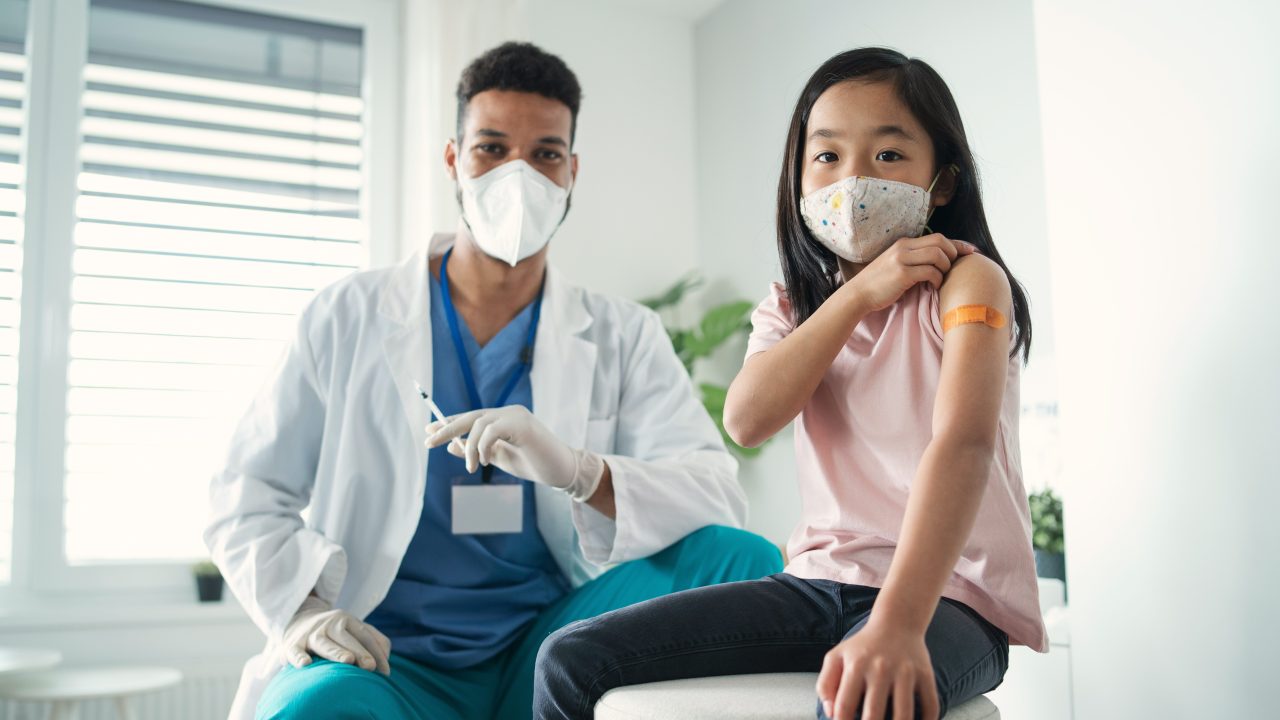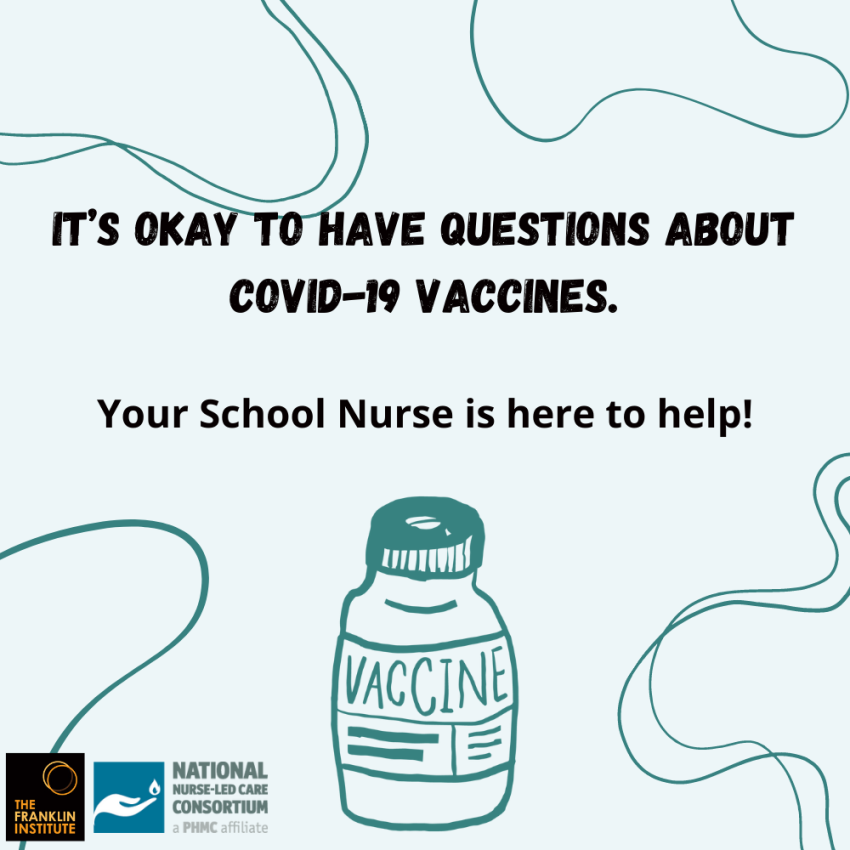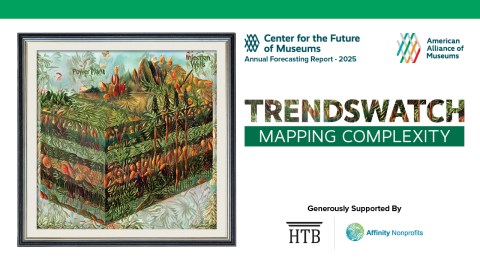
Bandaging skinned knees. Conducting health screenings. Managing care for chronic needs. Providing therapy and counseling. School nurses do all of this and more every day as they work with students, families, and staff. Throughout the COVID-19 pandemic, they’ve been asked to go even further—conducting contact tracing, tracking case counts, and developing health and safety plans. For families with school-aged children, a school nurse may be one of the most visible and reliable healthcare professionals in their lives. So when it comes to public health and education for kids, school nurses are right at the center.
Since COVID-19 vaccines were authorized for children under twelve in late 2021, immunization rates have lagged behind expectations, leaving children and their families at risk. This public health challenge has called for innovative strategies to improve vaccine education and access. Recognizing the critical role of school nurses as trusted health professionals within this population, our organizations—The Franklin Institute and the National Nurse-Led Care Consortium (NNCC), through support from the Centers for Disease Control and Prevention—partnered with them to launch the School Vaccine Education Program (SVEP) to build vaccine confidence in undervaccinated communities.

With complementary skill sets in public health, education, and patient care among the partners, this collaboration felt like an opportunity to tackle different challenges we’d all been facing individually. At NNCC, we’ve built a strong network of support and advocacy for nurse-led care, but wanted to explore new approaches to public health communication that could better reach people where they are. At The Franklin Institute, we had developed educational tools for sharing information about COVID-19, but they didn’t always align with the urgent needs of community health organizations primarily focused on crisis response services. And we learned that school nurses, at the front lines coming off the surge of the Omicron variant, were looking for resources relevant to their community’s needs to sustain their vaccine education and communication efforts.
The SVEP was born out of our vision that, by working together, we could build the capacity of community-based leaders to apply best practices of informal science education to improve long-term health in their local neighborhoods. At The Franklin Institute, we value our partnerships across Philadelphia in allowing us to be part of the community in a way that our building by itself can’t do—especially when it comes to something like vaccine confidence. We know from research on vaccine communication that the messenger matters. By partnering with NNCC to empower school nurses to be the messengers, we hoped to have an impact that we could never have on our own.
For COVID-19, the goal of the SVEP was to strengthen nurses’ expertise in educating elementary school students about the science of how the SARS-CoV-2 virus can make them sick and how vaccines work to protect them. We piloted the program in spring 2022 by recruiting a cohort of ten nurses from schools in underserved communities. This cohort guided development of useful, relevant, and effective resources, delivered programming in schools, and evaluated their impact. Thanks to their collaboration and feedback, we can share learnings that we hope will be informative to other museums while also laying the ground for future expansion.
Through early conversations with our cohort, we gained a deep appreciation of the different roles and responsibilities that nurses take on in their school communities. We knew that we needed to develop a flexible set of tools that could be adapted for diverse environments and communities, including those with limited English proficiency. We also knew that time was critical, given the urgency of building vaccine confidence as well as the practical realities of the school calendar. Luckily, thanks to the wonderful spirit of collaboration in the museum field and connections such as the Communities for Immunity Initiative and the National Informal STEM Education (NISE) Network, we didn’t have to start from scratch. Drawing on The Franklin Institute’s existing work as well as projects shared by the Pensacola MESS Hall and the WonderLab Museum of Science, Health, and Technology, we assembled five types of tools, with print materials in seven languages: 1) hands-on activities, 2) letters to families, 3) videos and scripts, 4) a one-page flyer, and 5) graphic communication assets.
We also asked the nurses about what skills and information would be most helpful for them to feel comfortable and confident in delivering the toolkit programming. Their highest priorities were facilitation techniques for interactive learning as well as conversation strategies for addressing misinformation. Accordingly, our training session included not only a review of all the toolkit materials, but also time for the nurses to learn evidence-based techniques of vaccine communication and The Franklin Institute’s “Core Four” facilitation strategies. As we watched the nurses practice with each other, it was clear that giving them their own experiential learning opportunity was valuable—and fun!
With tools and training in hand, the nurses went on to deliver an impressive variety of programs. We loved hearing about the creativity and diversity of formats and how they adapted the content to the needs of different audiences. “The toolkit allows you to engage the child and parent,” said one nurse. Some examples of the cohort’s programming include:
- Leading programs in classrooms
- Displaying materials at the nurse’s station during the end-of-year Field Day
- Encouraging hands-on exploration in the nurse’s office during routine health screenings
- Sending home flyers or holding assemblies prior to school vaccine clinics
- Filming their own version of the videos to share with families
In reflecting on their experience, the nurses valued the novelty of using toys to explain science, the visual and tactile elements of the interaction, and the connections between the materials and science concepts. One nurse reported, “Students hear the words ‘vaccine’ and ‘virus,’ but don’t have anything to visualize. After the How Vaccines Work lesson, students had an ‘aha’ moment with COVID virus and vaccines and actually commented, ‘Now I get it.’” Even outside of formal programming, the eye-catching materials and interactivity sparked “mini lessons” and organic conversations, both among students and adults, when nurses displayed them in their health rooms or other locations.
Most importantly, the nurses felt that they helped build community vaccine confidence at a critical time. While community tensions over lockdowns and the workload of daily contact tracing had eased, COVID case counts were rising in May and June, bringing the issue to people’s attention once again. The toolkit offered an opportunity to renew the conversation in a way that was grounded in experiential STEM learning. One nurse observed that “when kids are engaged, they go home and report what they learned and talk about vaccines.” Two others who held vaccine clinics at their schools during the implementation period felt that the communication channels opened by their programs directly influenced families’ decisions to get their children vaccinated at the clinic. One nurse even got questions from unvaccinated staff members who heard her presentations for students, and subsequently decided to get vaccinated themselves.
The significance of local community connections has been evident at every stage of the project. At NNCC, our initial idea for collaborating with The Franklin Institute was sparked by our previous involvement with its city-wide network for climate change education. Once we learned that The Franklin Institute was involved with Communities for Immunity, a new partnership seemed like a natural fit. The SVEP’s pilot cohort came from our local community as well. While the opportunity to participate was promoted to nurses across Pennsylvania through NNCC’s statewide networks, most of the applicants were from the Philadelphia area—likely reflective of The Franklin Institute’s local audience reach. That familiarity with the museum helped the educational programs resonate with students too. “So many of them have been to the museum, they were excited to hear that we were doing activities from The Franklin Institute,” shared one nurse.
We’re excited to expand the project to a larger cohort of nurses in the coming year with continued support from CDC. Now that vaccines have been authorized for children under five, we’ll be refining and adding to the toolkit to broaden its use for early childhood audiences. As we look to the future, the outcomes of our pilot encourage us to think about how to strengthen connections between nurses, schools, museums, and public health organizations. Our previous work has shown that informal educational programs are effective tools for building understanding and cultivating dialogue about the complex interrelationships between the human body, the physical environment, and social structures that shape health outcomes. An SVEP nurse shared, “One of the strongest tools a school nurse has is having opportunities to talk and educate.” By building the capacity of school nurses and other leaders to reach children and families with innovative health education, we can create a foundation for making informed lifelong decisions that advance community wellbeing.
Communities for Immunity is an initiative of the Association of Science and Technology Centers, Institute of Museum and Library Services, American Alliance of Museums, and the Network of the National Library of Medicine, with support from the Centers for Disease Control and Prevention, and in collaboration with the American Library Association, the Association of African American Museums, the Association of Children’s Museums, the Association for Rural and Small Libraries, the Association of Tribal Archives, Libraries, and Museums, and the Urban Libraries Council.







